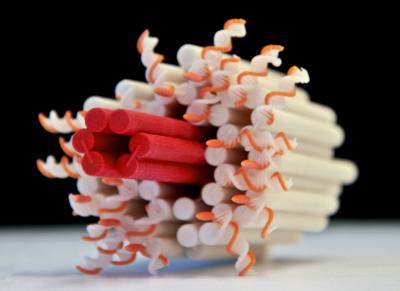This technique employs DNA molecules as programmable building materials for custom-designed, self-assembling, nanometer-scale structures. The researchers present evidence that their nature-inspired nanostructures may also behave like biological ion channels. Their results could mark a step toward applications of synthetic membrane channels as molecular sensors, antimicrobial agents, and drivers of novel nanodevices.

This 3-D print shows the structure of a functional synthetic membrane channel constructed through DNA nanotechnology -- that is, using DNA molecules as programmable building materials for custom-designed, self-assembling nanometer-scale structures. This DNA-based membrane channel consists of a needle-like stem 42 nanometers long with an internal diameter of just two nanometers, partly sheathed by a barrel-shaped cap. A ring of cholesterol units around the edge of the cap helps the device "dock" to a lipid membrane while the stem sticks through it, forming a channel that appears capable of behaving like a biological ion channel. The device is formed by 54 double-helical DNA domains on a honeycomb lattice. (Credit: Dietz Lab, TU Muenchen; copyright TU Muenchen)
To read more about this article, please visit AzoNano
No hay comentarios:
Publicar un comentario